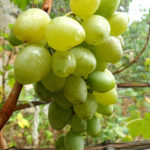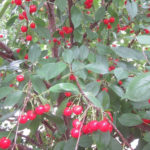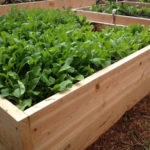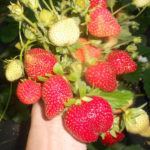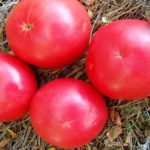Hydrangea paniculata Pastel green
Each hydrangea variety has something to brag about. But few species of oriental beauty are able to surprise their owner with too frequent changes in the color of the inflorescences. Usually shades replace each other 2-3 per season, nothing more. However, breeders do not sit still. Meet a new variety with the beautiful name Pastel Green, the color scheme of the inflorescences of which resembles a mixture of colors on the painter's palette.
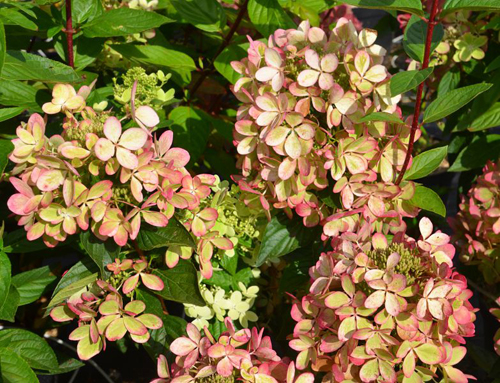
History of origin
The world learned about this variety of panicle hydrangea quite recently, in 2016. Its creator is quite famous among professional flower growers - this is the French breeder Jean Reno, who in the past added to the list of varieties with such beauties as Freise Melba, Vanilla Freis et al. The specified specialist is a representative of the SAPHO company. Pastel Green was awarded a silver medal at the international flower exhibition Plantarium-2016 in Holland and was named the most beautiful ornamental shrub with inflorescences that change their color.
Description of appearance and features
Pastel green is a plant of compact size: up to 120 cm in height and width. It has a neat crown formed by strong shoots and juicy green teardrop-shaped leaves with a glossy shine. Young stems are initially red in color, but over time they turn green and woody. The shoots of the hydrangea are strong enough and will not wither during lush flowering.
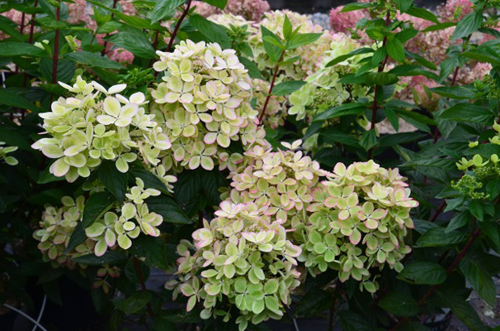
Inflorescences of an exquisite plant are cone-shaped, large, with a rounded, almost spherical top, up to 20 cm in length. They consist of large sterile flowers on long pedicels, each of which is formed by four rounded petals. On the bush, inflorescences appear in June and during the growing season change their white shade 5-7 times. From snow-white flowers, they first turn into cream, then acquire a greenish pistachio color, then become tender salmon. In the future, the color scheme of the petals includes coral and pink shades, and finally, with the arrival of autumn, the inflorescences are lush flower caps of wine-red tones. It is interesting that often on one inflorescence you can see several of the above shades. But you can believe: Pastel green is a miracle how beautiful it is in any of its floral outfits! The flowering of panicle hydrangea lasts until the end of September.
The variety is distinguished by its growth rate, resistance to the gas-polluted atmosphere of large cities. It can withstand a drop in air temperature to -30 ° C, but it is still recommended to cover the plant for the winter. Rains worsen the appearance of the inflorescences, which is why the crop is not suitable for growing in regions with rainy summers.

Cultivation conditions and care
The shrub should be placed in an area in partial shade or full of sunlight. Excessive light will not lead to fading of inflorescences and loss of rich foliage color. At the same time, Pastel green must be protected from drafts.
The plant is not too demanding for soils, which is the advantage of this hydrangea. The soil, ideal for a paniculate beauty with airy inflorescences, is moderately moist, loose, fertile. The acidity of the soil can be any, but it is preferable to use soil with a slightly acidic reaction.
Water Pastel Green in moderation. Water is taken soft, at room temperature. When moistening the soil, it is important to ensure that no moisture gets on the flower petals and foliage. The frequency of watering is once a week. During the entire period of active growth, the soil for Pastel Green must be fed.In the spring, an aqueous solution of urea is introduced under the hydrangea bush, in the phase of the appearance of buds and flowering - a complex mineral fertilizer, in the fall - a concentrate with potassium and phosphorus in the composition. Top dressing is carried out every 15-20 days.
In order for moisture to remain in the soil longer, loosen the soil after watering, and then cover the soil in the area of the trunk circle with a layer of mulch. Sawdust, peat moss, tree bark can play its role. The shrub is pruned annually: sanitary (produced regularly), rejuvenating (carried out annually, shortening healthy stems to four buds) and formative (performed in the first years of the culture's life). Faded inflorescences are also removed. The plant rarely gets sick, but it is still recommended to treat it with a fungicide solution 2-3 times per season for preventive purposes.
Use cases
Pastel green has already caught the fancy of landscape designers. Charming shrubs easily coexist with other varieties of hydrangeas, forming spectacular group compositions. As companions for our heroine, you can also choose cereals, which, with their simplicity and modesty, emphasize the elegance and splendor of a noble culture. These are rod-shaped millet, miscanthus, feather grass. The variety is appropriate in parks, squares. It is used to decorate the facade of a house. The shrub is good in single plantings. The plant can be cultivated in containers on balconies, terraces.
